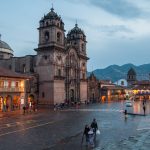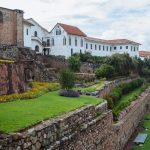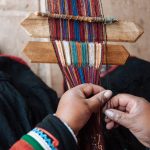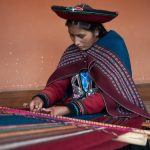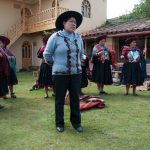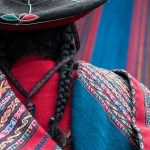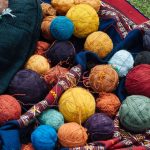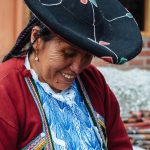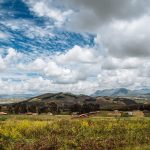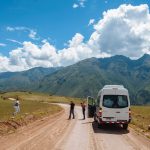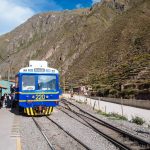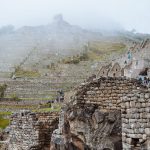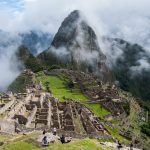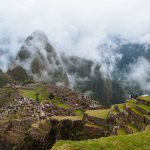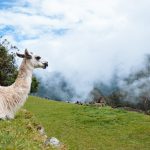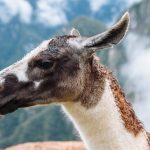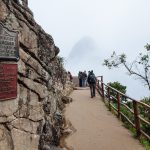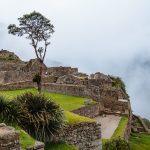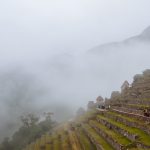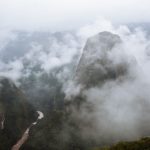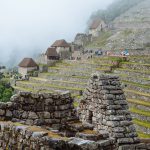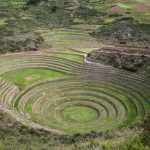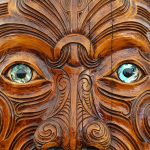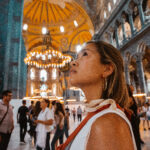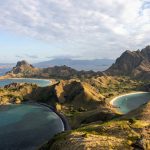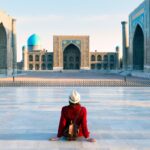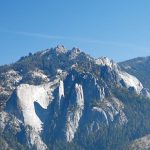by Colin Roohan, AFAR Ambassador
Peru is a beautiful country where the topography varies drastically. When I flew into mountainous Cusco from coastal Lima the beauty (but mainly the altitude) took my breath away! My tour group was to visit some of the popular towns and archeological sites in and around what is called the Sacred Valley, which runs from Machu Picchu to Urcos along the Urubamba River in the south-central region of Peru. This valley encompasses a large area so trying to pick a feasible number of destinations within the valley can be daunting. Luckily my tour group was led by USTOA tour operator member Travcoa and partner PromPeru who provided an incredible itinerary which included visits to the following: the ancient city of Cusco, the colonial settlement of Chinchero, the agricultural sites of Maras and Moray, the small yet busy Machu Picchu Pueblo, and of course Machu Picchu itself.
Perhaps the best place to start exploring the area around the Sacred Valley is from the once capital city of the Incas, Cusco. Cusco is a beautiful city wherein the locals have a strong link to their Inca ancestors as most structures are literally built on top of old Inca foundations. Central Cusco seems like a complex maze of streets and alleys but it is surprisingly easy to navigate on foot. The Plaza de Armas which is both scenic and centrally located makes for a great place to start exploring Cusco. One structure that shouldn’t be missed is the La Catedral (and attached Church of Jesus Maria). The ornate cathedral that was built in the 1500s’ is a great example of the Spanish religious influence in the region. Another thing you’ll notice that has Spanish influence is the Portal de Panes – a covered area of sidewalk surrounding the plaza, where there are numerous handicraft shops and relaxing cafes that offer views overlooking the plaza. It makes for an ideal place to sit and have a drink or to simply do some people watching.
From the Plaza de Armas, our group headed southeast towards a major Cusco attraction – the Q’orikancha complex, a large and breath-taking temple of worship, of great importance to the Inca. The ingenuity of the Inca is apparent at Q’orikancha as its’ geographic location within the Cusco Valley aligns with hundreds of sacred monuments, significant stones, natural springs and prehistoric quarries. What’s even more impressive is that during the summer solstice the suns’ rays only shine into a specific area of the temple where only the emperor was allowed to sit.
Driving through the Sacred Valley was incredible; the Andes provide a very dramatic backdrop and the random livestock make you feel miles from civilization. We made stops at the Moray agricultural and ceremonial tiered-ruins and at the breathtaking, centuries-old Salinas salt pans, but for me the most moving local experience was our stop at the Chinchero Weaving Cooperative. As we entered the collective I felt bombarded by color. There were around 25 women of varying ages, most working on some type of loom. The woman who greeted us also gave us a very engaging presentation that explained how these women create such stunning, intricate pieces. We learned how the alpaca and llama wool are turned into yarn, how the yarns are dyed, and how some of the looms operate. It was a thought-provoking presentation and the women working at the cooperative were so welcoming and kind. I later learned that Chinchero means “Village of the Rainbow,” a perfect name and quite befitting of my experience.
Our next stop was the town of Aguas Calientes, or what is now called Machu Picchu Pueblo. As I stepped off of the train in Aquas Calientes, I was immediately surprised by the change in climate; the chilly breezes vanished and made way for a mask of humid air and a continuous sequence of fog and cloud seemed to roll through the small town perched above the Rio Aquas Calientes. The town itself is rather small and can be explored on foot in a couple of hours. Judging by a conversation we had with locals, most people only spend one night in the town. It is a beautiful quaint town but when you’re standing in the shadow of a giant (Machu Picchu) it’s tough to truly shine as an attraction. Additionally, Machu Picchu Pueblo is a challenging place to get to but I think this only adds to the allure of Machu Picchu, making the feeling of seeing the monument all the more special.
On the day we were to visit Machu Picchu, the group awoke early and joined the queue for the buses that drive up to Machu Picchu around 5 am. With a bus full of almost palpable anxiety, we ascended for the next twenty minutes traversing one switch-back after another into a thick blanket of clouds. We arrived at the entrance and made our way over to what is known as the Viewing Platform. Despite some light rain and overcast skies, the ruins of Machu Picchu looked glorious. Our guides from PromPeru gave us a very informative tour and I learned a lot about the former residents of the Citadel. However, after hearing about Hiram Bingham and the 11-year-old boy who led him around the area that first time I had a hard time replacing that image in my head. We spent a few hours walking around, giving us time to see all angles of the complex. It is such an incredible place that moves everyone in a different way; a rare gem of magnificent ingenuity that truly is a wonder.
Colin Roohan is a travel photographer interested in documenting experiences with culture and life. In addition to his work with AFAR, Colin has been published in Travel + Leisure, The Royal Geographical Society’s Hidden Journeys, and Groove Magazine, amongst others. In addition to journalistic pursuits, Colin captures portraits and documents events around Southern California. Hear more about his journey to Peru at AFAR.com.
Posted in:
